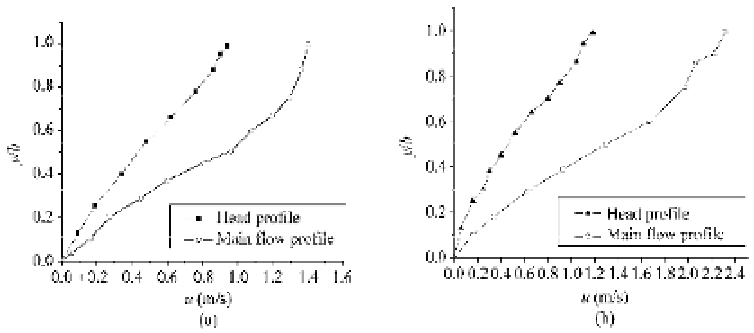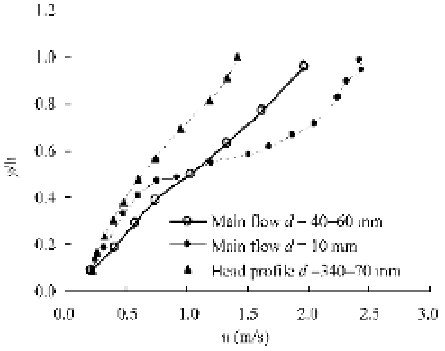Environmental Engineering Reference
In-Depth Information
Fig. 4.39
(a) Velocity profiles of particles in the head and the main flow of experiment No. 15; (b) Velocity profiles
of particles in the head and the main flow of experiment No. 17 (after Wang et al., 2005)
4.3.2.6
Mechanism of Larger Particles Concentrating in the Front Head
Experimental observation also has found that the head is composed mainly of large particles. One can
reason that large particles move at higher velocities than small particles and thence concentrate in the
head. Many people have accepted the theory that the dispersive force is proportional to the particle
diameter to the power of 2, and, thus, big particles are raised to the upper layer, so that the large particles
finally concentrate in the front of the head. In fact the weight of the particles is proportional to the
diameter to the power of 3, which tends to move big particles down to the bed. The instantaneous
velocity of small particles is higher but the average velocity is lower than for large particles. Figure 4.40
shows the velocity profiles of particles in the head, the velocity profile of large particles (
d
= 40-60 mm)
in the main flow, and the velocity profile of small particles (
d
= 10 mm) in the main flow of the
experiment. The velocity of small particles is higher than the velocity of large particles in the upper flow
and lower in the lower flow.
Fig. 4.40
Velocity profile of particles in the head and velocity profiles of large and small particles in the main flow
of the experiment (after Wang et al., 2005)
A small particle accelerates under the action of the liquid flow and moves faster than the large particles.
It hits a large particle in front of it and transfers its kinetic energy to the large particle by the collision.
Then the small particles stop moving and fall down on the bed. The phenomenon is seen for many small
particles. Following the movement of the debris flow down the flume more and more small particles fall



Search WWH ::

Custom Search